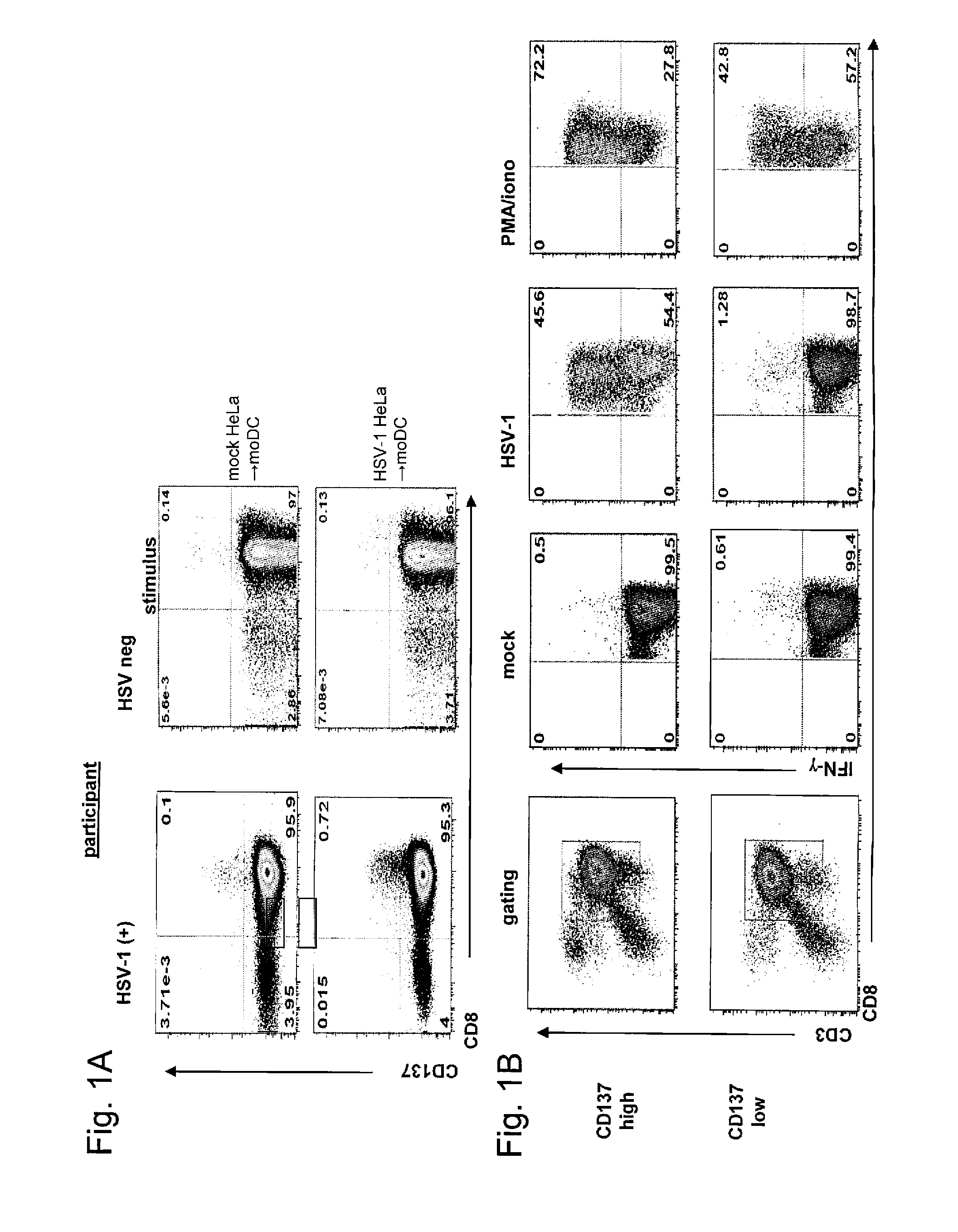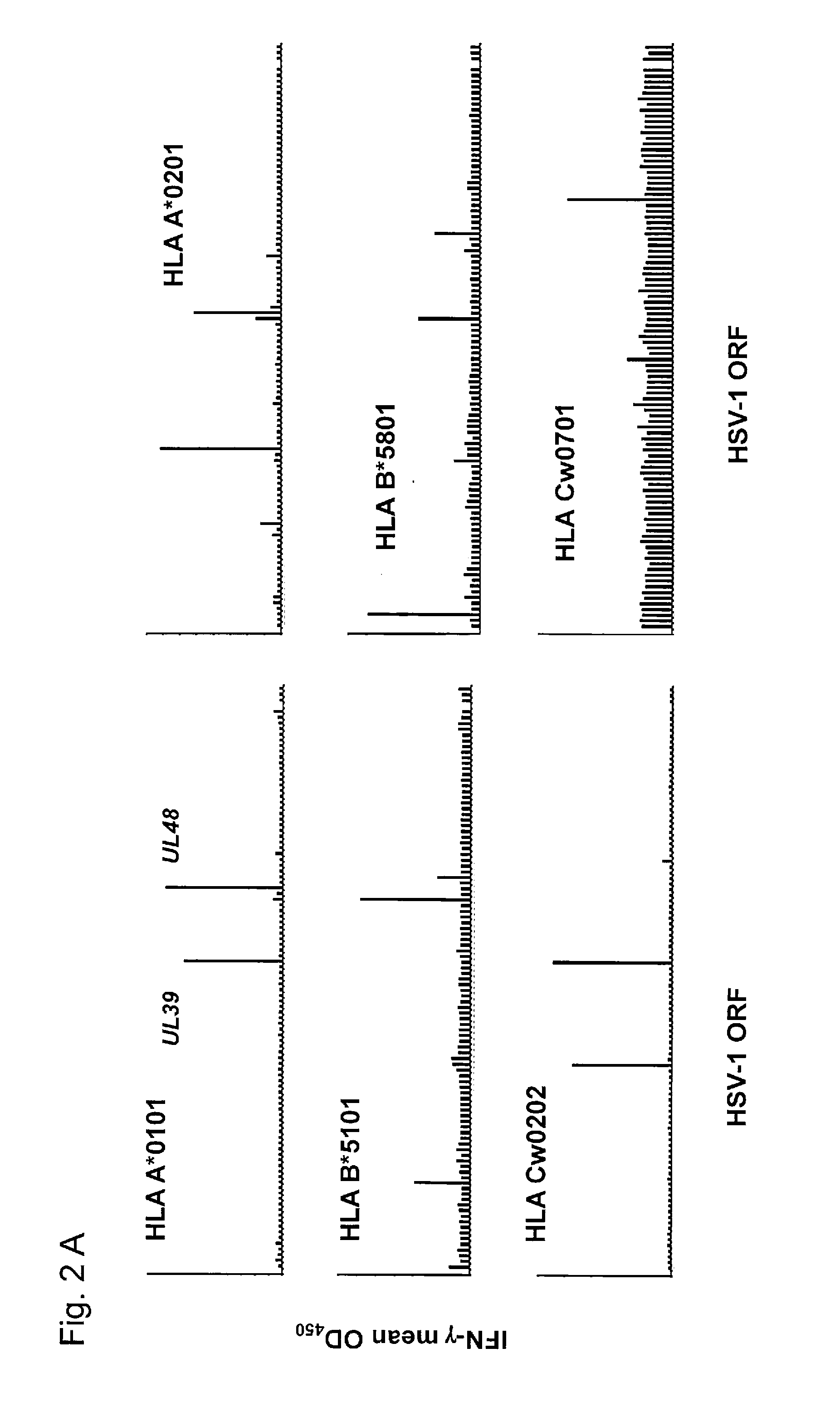Hsv-1 epitopes and methods for using same
a technology of herpes simplex virus and epitope, applied in the field of molecules, compositions and methods, can solve the problems of corneal transplantation, long-term brain damage, blindness, etc., and achieve the effects of/or immunomodulatory lymphocytes, and enhancing the secretion of antiviral
- Summary
- Abstract
- Description
- Claims
- Application Information
AI Technical Summary
Benefits of technology
Problems solved by technology
Method used
Image
Examples
example 1
Herpes Simplex Virus Type 1 T-Cell Antigens in Humans Revealed by Cross-Presentation and Genome-Wide Screening
[0116]There is an unmet need for vaccines for herpes simplex virus type 1 (HSV-1) and other large-genome pathogens. Presumably, a vaccine must stimulate coordinated T-cell responses, but the large genome and the low frequency of virus-specific T-cells have hampered the search for T-cell antigens. We have developed new methods to efficiently provide a genome-wide map of HSV-1-specific T-cells, and demonstrate applicability to a second complex microbe, vaccinia virus. We used cross-presentation and CD137 activation-based FACS to enrich polyclonal CD8 effectors. The HSV-1 proteome was prepared in a flexible format for CD8 and CD4 studies. Scans with participant-specific artificial APC panels identified an oligospecific response in each person. Results enabled streamlined discovery of myriad novel CD8 epitopes, permitting direct ex vivo assays of HLA-appropriate persons. Paralle...
PUM
| Property | Measurement | Unit |
|---|---|---|
| volumes | aaaaa | aaaaa |
| volumes | aaaaa | aaaaa |
| volume | aaaaa | aaaaa |
Abstract
Description
Claims
Application Information
 Login to View More
Login to View More - R&D
- Intellectual Property
- Life Sciences
- Materials
- Tech Scout
- Unparalleled Data Quality
- Higher Quality Content
- 60% Fewer Hallucinations
Browse by: Latest US Patents, China's latest patents, Technical Efficacy Thesaurus, Application Domain, Technology Topic, Popular Technical Reports.
© 2025 PatSnap. All rights reserved.Legal|Privacy policy|Modern Slavery Act Transparency Statement|Sitemap|About US| Contact US: help@patsnap.com



